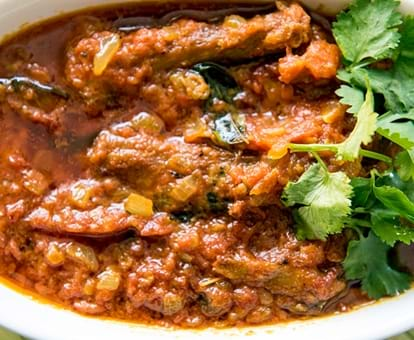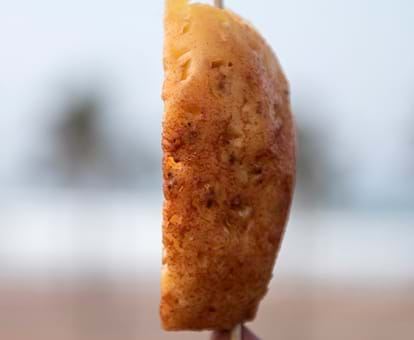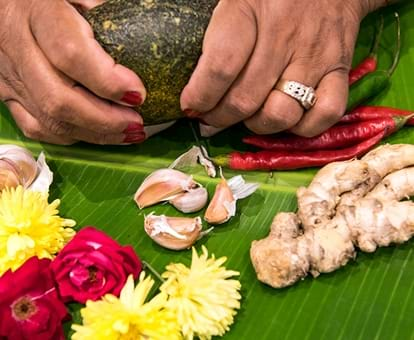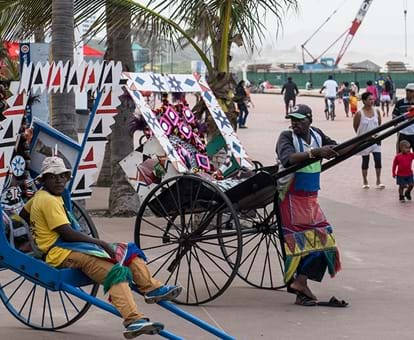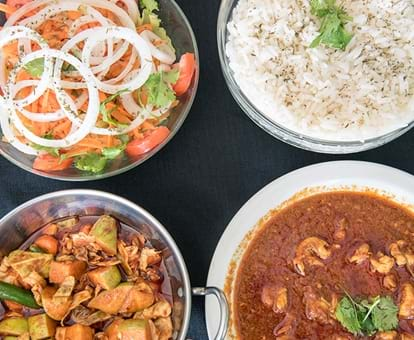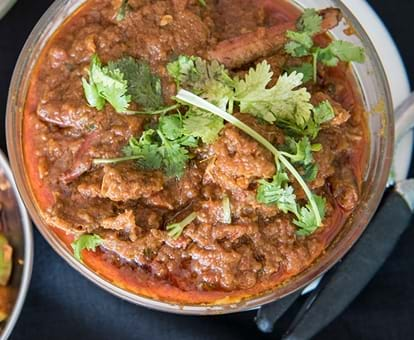By creating an account, I agree to the
Terms of service and Privacy policy
Choose your country and language:
Africa
Americas
Asia Pacific
Europe
TThese are the fieriest curries in the land. But Durban Indian food isn’t confined to just curry. Here you’ll find a unique mix of South and North Indian dishes like breyanis and pilaus, and cooking styles that have melded over time and include unique indigenous ingredients.
Durban Indian cuisine has its roots in the arrival of the South Indian indentured labourers to the port of Natal, transported on 45-day steamship journeys between 1860 and 1911. They came to the east coast of South Africa for predominantly manual labour, to work on the British-run sugar cane plantations, and in the railways, fishing and boating industries. From the agricultural classes and of lower castes generally, they were requested to work on five-year contracts in what was promised to be fair working conditions, with adequate housing, medical care and clothing. The 152 184 labourers who arrived in total, have over time, shaped the cuisine and cultural heritage of Durban and South Africa.
According to a legal notice from 1874, the labourers were to receive rations of dholl (yellow spilt peas), dried fish, oil and rice. Not all promises were kept, however, and the newcomers found themselves in dire conditions that many historians compare to slavery. Like they did with their new, unfamiliar surroundings, they adapted to the circumstances, and food, over time. When rice was scarce, dried maize was crushed to create mealie rice.
CCheap vegetable oil replaced ghee, coconut and mustard oils. Coconuts, unlike it is in Tamil Nadu where they are used in cookery with abundance, were reserved for prayers. Maize meal was fermented to make sour porridge, as it had been done in South India with rice at a stage. Labourers would consume this at breakfast for energy, which then went out of favour with the arrival of coffee in then-Madras. Local ingredients used by Zulu neighbours - like “running” or free-range, mature chickens, madumbis (a local yam) and amasi (fermented milk, with a gloopy, yoghurt texture) appeared in the cookery - and remains today. So too do green mangoes and bananas, sheep head and trotters and an abundance of fish. Several cooks featured in my research-based cookbook Curry: Stories & Recipes across South Africa speak fondly of mielie rice and tinned pilchard curries - cheap meals that sustained large families.
While the indentured Indians would have brought spices, seeds and plant cuttings during their voyages on the ships, the merchant or passenger class of Gujaratis who arrived of their own accord, later supplied the workers with spices, vegetables and conveniences from home. The humid surrounds and fertile soil allowed for many of the beans, gourds, herbs, chillies and curry leaf plants they were accustomed to, to thrive there too.
Because the Gujarati traders travelled back home regularly, their cuisine remained fairly intact, while the food of the labourers transformed over time - what anthropologist Sheetal Bhoola calls in an email interview "continually evolving and adapting”. She adds that Durban Indian food is “a hybrid of varying cooking techniques from more than one region of India which combined with local available ingredients and localised versions of spices”.
WWhat makes a good Durban curry, I ask Mr Manilal Patel. At 76 he’s the last in line at Patel’s Vegetarian Refreshment Room in Yusuf Dadoo (formerly Grey) Street, opened by his father in 1932. A takeaway known for its affordable curries and the widely publicised bunny chow (hollowed-out quarter loaves of white bread filled with curry), it feeds customers from as early as 6.30am.
Turns out, the secret is the oil (Durban curries are known for the glossy oil slick at the top), fresh masala and how you cook your onions and garlic. Some say it’s the red colour and the use of soft-cooking “gravy soaker” potatoes too. The potatoes make an appearance in breyanis too - unheard of in India and elsewhere. I polled the Grey Street Casbah Facebook group, 220 480-strong, dedicated to food memories of this area once known as the Indian Quarter with its fast-disappearing Indian-run cafés, takeaways, clothing and repair stores and most of the 77 comments echoed the same. As to who made the first bunny chow, the verdict is still out, though many credit the old Kapitans.
Regional radio producer and news editor Salma Patel, who comes from a line of great cooks, says that fresh, aromatic curry leaves are what separate Durban Indian cookery from that of the Cape Malay curries on the west coast.
Today, Durban’s 800 000 Indians, descendants of the indentured labourers, comprise the highest concentration of Indians outside India in a single city. The combination of the unique history tied to indenture, as well as the succession of repressive regimes that followed over the course of history, ensured that Durban Indian cuisine developed in virtual isolation. It transformed into this red-hot, hearty, generous style of food meant to nurture many with easily accessible, inexpensive ingredients.
For the best Durban Indian food, these are my picks:
- Hollywood Bets in Springfield for fantastic bunny chow.
- Try a variety of Durban curries, snacks and breyanis at Cane Cutters in Glenwood.
- For a posh sit-down curry try the curry buffet at The Oyster Box Hotel in Umhlanga.
- For outstanding Durban prawn, crab and mutton curries, go to Impulse by the Sea at Manor Beach (+27 32 554 4626).
Durban Indian cuisine
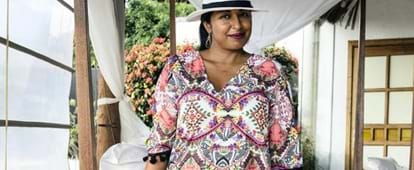
AAbout the author
Ishay Govender-Ypma is an ex-lawyer, freelance journalist, cookbook and guidebook author. Her work appears in local and international publications such as National Geographic, Saveur, The National UAE, Food & Wine and Literary Hub.
Related articles


